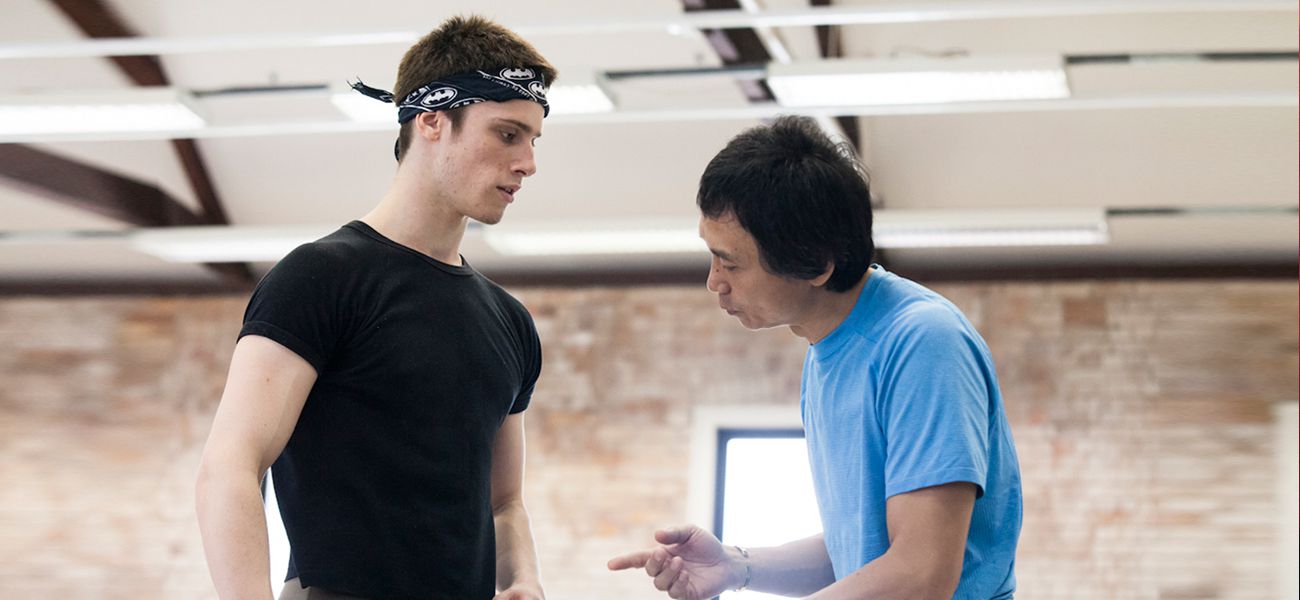Step up with Vito Bernasconi —
I was recently given a smart watch as a present and I have been really interested in the Activity features. I‘ve been an active person all my life and have been dancing for almost 20 years now, and for the first time I’m able to track just how much effort goes into the activities I love doing. Since getting the watch I have used it every day to measure statistics on cycling, walking, and quite new this year for me, running. The watch has also been a great tool for finding out just how much physicality goes into an average ‘day at the office’ for me!
As a full-time professional ballet dancer, a typical day will feature Company Class and production rehearsals. I will ‘walk’ around 10,000 steps and expend around 3000 calories, which is actually very similar to the amount someone my weight and height will use in a full marathon. Interestingly, the way we run a full day of dancing is similar to a full marathon, with sprints along the way.
As regular dance class attendees may know, a typical ballet class begins at the barre where exercises are done, before moving to the centre without the aid of the barre. Small movements gradually increase in range, strength and difficulty as the class progresses. Turns are then incorporated, before class concludes with jumps and leaps. Before starting Company Class I warm up (mid-high cardio, dynamic stretching and massage) to wake up my body and prepare it for the session. Afterwards, I finish with a cool down (stretching, massage and low-med cardio). Timing-wise, this equates to a 30 minute warm up, 30 minutes at the barre, 15 minutes of centre work, 15 minutes of pirouettes, 30 minutes of jumps and a 15-30 minute cool down, totalling around 2.5 hours of activity. We have Company Class at Queensland Ballet six days a week (Saturdays are optional), before a busy day of rehearsals or performances.
During rehearsals, which can be up to two hours at a time, we keep warm for the duration to ensure we are ready to perform at any given point. I maintain body warmth with jackets, tracksuit pants, leg warmers and boots. I keep my heart rate steady by running on the spot, jumping or marking out choreography (low intensity cardio). When I know I’m going to be dancing soon, I’ll adjust to medium-high intensity cardio to increase blood flow. I’ll finish off with some dynamic stretching (leg swings, back twists) or practising some choreography to prime myself. I’ll then perform the section being rehearsed and once I’m done, cool back down to a steady pace and repeat the process until I’m needed again.
As well as being so physically active, a professional dancer’s day correlates with a student in class or a full-time worker, in that we all require focus and attention as we take in new concepts and information. In order to master and retain choreography, I will draw on the entire ballet and dance vocabulary at my disposal, developed through years of practice. My body’s muscle memory works in tandem with my mind to adapt to sequences of steps, placement on stage and notes from choreographers. After the day is done, while a student will study to soak in the knowledge to prepare them for the next one, or a worker will ready their mind for a key meeting or presentation, a dancer is doing the same while recovering their body by icing their legs or getting treatment to avoid injury.
We also get around four weeks of annual leave each year, leaving ballet in the wings and enjoying some time away from the studio and stage. This is an important period for recovery, before rebuilding intensity to be in peak condition in body and mind for a brand new season. Whether I’m working or playing during this time, you can be sure I’ll be checking my watch for those steps and calories!
